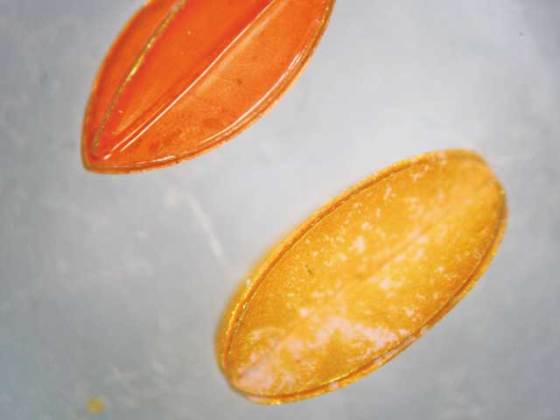Oxygen-sensing microrobots could help in fight against glaucoma
 Glaucoma is only one of several diseases that can decrease the oxygen supply to the retina. An insufficient supply can cause blindness, sometimes within mere hours, so patients and physicians have to react as soon as possible to preserve the eyesight of the patient. Up until now there have been no methods sensitive enough to measure how well the eye is oxygenated, but a microrobot developed by researchers at ETH Zurich may solve that problem.
Glaucoma is only one of several diseases that can decrease the oxygen supply to the retina. An insufficient supply can cause blindness, sometimes within mere hours, so patients and physicians have to react as soon as possible to preserve the eyesight of the patient. Up until now there have been no methods sensitive enough to measure how well the eye is oxygenated, but a microrobot developed by researchers at ETH Zurich may solve that problem.
Led by Bradley Nelson, ETH-professor and head of the Institute for Robotics and Intelligent Systems, researchers of the multi-scale robotics lab at ETH Zurich have built and constantly improved miniature robots that could deliver drugs to a specific area of the retina or function as micro-scalpels to remove scar tissue within the eye. After talking to ophthalmologists and surgeons the researchers realized the potential of their microrobot as a diagnostic tool for measuring oxygen at the retina.
A mere millimeter (0.04 inches) in length and one third of a millimeter in diameter, the robot can move through the vitreous, guided by magnetic fields that allow the researchers to precisely steer it into position. Chemists at the University of Granada helped with oxygen detection with their fluorescent dye that behaves characteristically depending on the amount of oxygen present in its surroundings.
The dye emits fluorescence that fades gradually when it is excited with a light pulse of a certain wavelength. The more oxygen is present, the faster it fades. Using nanospheres made of this dye, Olgac Ergeneman of the Multiscale-Robotics-Lab and his colleagues coated the microrobot to convert it into an oxygen indicator. The nanospheres helped increase the surface, thus increasing the probability of contact and the amount of fluorescence the miniature device emits.
ETH Zurich researchers tested the robot in water in which they generated an oxygen gradient in order to test the sensitivity of the system at several positions of the gradient. The sensitivity they achieved proved sufficient for diagnostic use within the eye.
Ophthalmologists could inject the micro-device with a syringe, steer it into the correct position using magnetic fields and microscopically measure the fluorescence through the pupil. As the robot is magnetically attracted to the syringe, physicians can easily remove it the same way they introduced it.
The disadvantage of the method is that it is – though minimally – invasive and thus entails a remaining risk of infection. While other novel tools are non-invasive, they are far are less sensitive in measuring oxygen. Further development of the robot could result with a combination of technologies which turns the microrobot into a dual diagnostic- and operation-device.
For more information, read the paper published in IEEE Transactions on Biomedical Engineering: “In Vitro Oxygen Sensing Using Intraocular Microrobots”.










Leave your response!